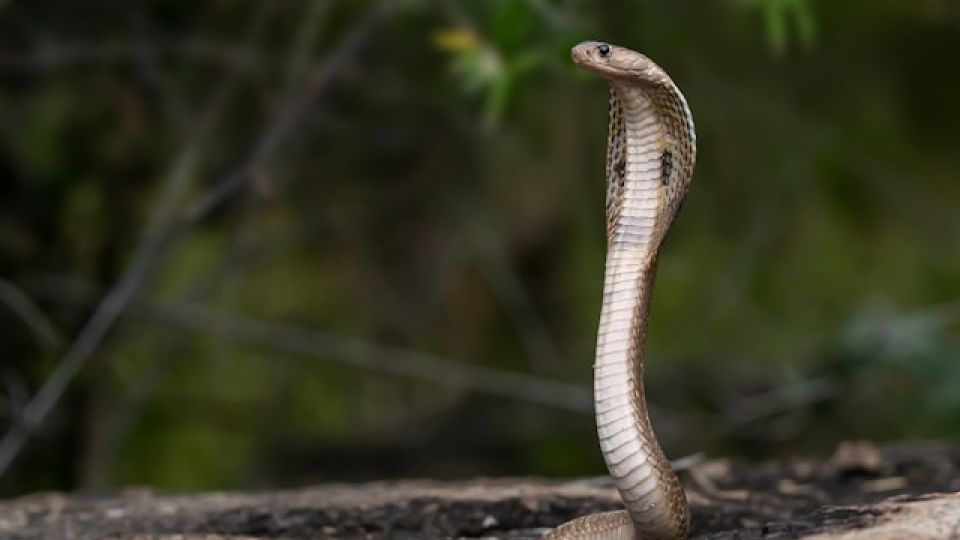April 22, 2025
KATHMANDU – At least four snakebite victims were receiving in-patient care at the Sukraraj Tropical and Infectious Disease Hospital in Kathmandu on Sunday.
Along with Sukraraj Hospital, the number of snakebite victims seeking medication has risen at other hospitals as well, amid rising temperatures, health officials say.
“Four to six snake bite victims seek treatment in our hospital each day of late,” said Yuba Nidhi Basaula, director at the hospital. “Four snakebite victims have been receiving in-patient care today [Sunday], and they are all either from Kathmandu Valley or from the peripheral districts.”
Incidents of snakebite and resulting deaths are common in Tarai districts in southern Nepal during the summer. But, of late, cases of venomous snakebites have increased in the hilly and mountainous districts, leaving doctors and experts alarmed.
They said global warming might be pushing venomous snakes from the Tarai into hilly and mountainous districts, where they were previously never found.
Nepal is among the world’s most vulnerable countries to the climate crisis and has witnessed multiple extreme weather events over the past decade and a half.
Evidence suggests that maximum temperatures in Nepal are rising at a faster rate of 0.056 degrees Celsius a year, compared to the global average rise of 0.03 degrees Celsius a year.
Compared to districts of the Tarai region, those in hills and mountains have been witnessing a more rapid increase in daytime maximum temperatures, which could have helped venomous snakes survive there, according to the experts.
“To address the growing number of snakebite incidents, especially in hilly and mountainous districts, we have expanded snakebite treatment centres around a dozen places,” said Dr Hemanta Chandra Ojha, an official at the Epidemiology and Disease Control Division. “Districts, where we expand snakebite treatment centres, include Syangja, Rukum and Ramechhap.”
Each year, around 2,700 people, mostly children and women from Nepal’s Tarai region, die of snakebites, according to a March 2022 report published in The Lancet, a leading international medical journal.
However, snakebite cases are vastly underreported in the country. Incidents are also common among cattle, and thousands of farmers are affected every year.
The government has committed to reducing 50 percent of deaths and disabilities through snakebite envenomation by 2030, the national target aligned with the World Health Organisation’s ‘Snakebite Roadmap’.
As the deadline nears, herpetologists and public health experts emphasise the urgency for raising awareness and training local health workers to meet this crucial health goal.
They say that fatalities and disabilities from snakebites can be drastically reduced if vulnerable populations, especially children, women and farmers residing in rural areas, are made aware of the risks.
“Along with awareness, health workers serving at the local level should be trained to deal with snakebite cases,” said Dr Sanjib Kumar Sharma, a snakebite expert with the World Health Organisation. “People should be encouraged to rush victims to health facilities immediately following a snakebite, as 80 percent of deaths from snakebites occur before reaching hospitals.”
Officials at the Ministry of Health and Population said that they have already stockpiled the anti-snake venom and supplied it to treatment centres. Nepal imports quadrivalent antivenom from India, which is effective against four common species of snakes found in India: the common cobra, common krait, saw-scaled viper, and Russell’s viper. Saw-scaled viper has not yet been found in Nepal.
Deaths from pit viper bites in the hills and mountainous regions have also risen recently. However, the antivenom made for other venomous snakes does not treat pit viper bites.
Experts say authorities must also strengthen health infrastructures to achieve the target. They say due to poor infrastructure in healthcare facilities—lack of doctors, anti-snake venoms, ventilator support systems, and kidney dialysis facilities—dozens of people die from snakebites every year.
While health facilities are ill-equipped and short on anti-snake venom, many people in rural areas lack awareness and often consult shamans instead of physicians.
Doctors say women who go to the fields to collect fodder, farmers working in plantations or during harvest, and children who play in open areas are more vulnerable to snakebites. Poor people living in thatched-roof houses are also highly vulnerable to snakebite, as snakes visit such homes in search of rats, their food.
Experts say there should be a greater awareness drive on keeping homes and surroundings clean, preventing children from playing in bushes, and avoiding walking outside at night. If absolutely necessary, people must use torchlights when walking in the dark.
The WHO has added snakebite envenoming to the list of neglected tropical diseases, highlighting the need for stronger epidemiological evidence in endemic countries such as Nepal.


